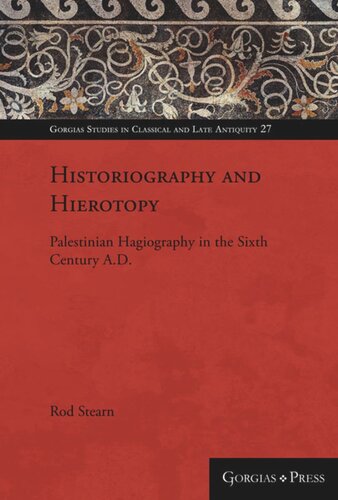

Most ebook files are in PDF format, so you can easily read them using various software such as Foxit Reader or directly on the Google Chrome browser.
Some ebook files are released by publishers in other formats such as .awz, .mobi, .epub, .fb2, etc. You may need to install specific software to read these formats on mobile/PC, such as Calibre.
Please read the tutorial at this link: https://ebookbell.com/faq
We offer FREE conversion to the popular formats you request; however, this may take some time. Therefore, right after payment, please email us, and we will try to provide the service as quickly as possible.
For some exceptional file formats or broken links (if any), please refrain from opening any disputes. Instead, email us first, and we will try to assist within a maximum of 6 hours.
EbookBell Team

4.1
40 reviewsJudean hagiographies are unusual. Some surprise in their structure, resembling historical chronicles more than "traditional" hagiographies. Others offer unexpected content, running counter to the stylizations of their time. The peculiarities of these works have often been examined on literary and theological grounds. It is the unmined implications of their socio-economic context, however, that provide new perspectives on the works' unique qualities. The local and imperial connections of the saints, the networks they constructed, and the institutional realities of the monasteries they founded shine new light on Judean texts. The search for this formative context leads the reader through the patronage networks of Jerusalem, Constantinople, and Rome. It moves from the quiet desert to the bustling halls of power, and from anchoritic cells to ecumenical councils. It navigates ecclesiastical factions of Syriac, Greek, and Latin connection, and negotiates the economics of Holy Land pilgrimage. Circling back to examine the hagiographers themselves in a new way, the search provides new answers to an old question: why are Judean hagiographies so unusual? This approach firmly links the works to their institutions, and envisions them as the textual element of larger hierotopic constructions.